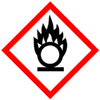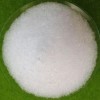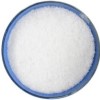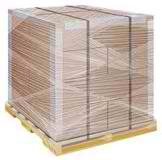SDS of Potassium Iodide & Potassium Iodate USP IP BP Ph Eur ACS Reagent FCC Food Grade Manufacturers
CAS Number 7681-11-0 and CAS Number 7758-05-6
Potassium Iodide & Potassium Iodate USP IP BP Ph Eur ACS Reagent FCC Food Grade Manufacturers.
Potassium Iodide SDS, Safety Data Sheet
MSDS, Material Safety Data Sheet 04-Sept-22
1. Product Identification
Product Name & Other Names: Potassium iodide or Knollide or Potide or Iodic acid potassium salt or Hydroiodic acid potassium salt.
CAS No.: 7681-11-0
EINECS EC Number: 231-659-4
Molecular Weight: 166
Chemical Formula: KI
Relevant uses and uses advised against (if any): Industrial Manufacturing.
2. Hazards Identification
GHS, Globally Harmonized System Classification in accordance with 29 CFR 1910
Classification according to Regulation (EC) No 1272/2008
Acute toxicity, Oral (Category 4), H302
Skin irritation (Category 2), H315
Eye irritation (Category 2), H319
Labeling according GHS & Regulation (EC) No 1272/2008
GHS Label Elements  Irritant |
Signal Words: Warning
Hazard statements:
H302: Harmful if swallowed.
H315: Causes skin irritation.
H319: Causes serious eye irritation.
Precautionary statements:
P264: Wash --- thoroughly after handling.
P270: Do not eat, drink or smoke when using this product.
P280: Wear protective gloves/protective clothing/eye protection/face protection.
P330: Rinse mouth.
P362: Take off contaminated clothing and wash before reuse.
P301+312: IF SWALLOWED: Call a POISON CENTER or doctor/physician if you feel unwell.
P302+352: IF ON SKIN: Wash with soap and water.
P332+313: If skin irritation occurs: Get medical advice/attention.
P305+351+338: IF IN EYES: Rinse cautiously with water for several minutes. Remove contact lenses if present and easy to do – continue rinsing.
P337+313: If eye irritation persists get medical advice/attention.
P501: Dispose of contents/container to authorized agents only.
3. Composition/Information on Ingredients
Product Name & Other Names: Potassium iodide or Knollide or Potide or Iodic acid potassium salt or Hydroiodic acid potassium salt.
CAS No.: 7681-11-0
EINECS EC Number: 231-659-4
4. First Aid Measures
Always seek medical attention after first aid measures are provided.
Inhalation: Remove to fresh air. If not breathing, give artificial respiration. If breathing is difficult, give oxygen. Get medical attention.
Ingestion: Never give anything by mouth to an unconscious person. Get medical attention.
Skin Contact: Wipe off excess material from skin then immediately flush skin with plenty of water for at least 15 minutes. Remove contaminated clothing and shoes. Get medical attention. Wash clothing before reuse. Thoroughly clean shoes before reuse.
Eye Contact: Immediately flush eyes with plenty of water for at least 15 minutes, lifting lower and upper eyelids occasionally. Get medical attention immediately.
5. Fire Fighting Measures
Flammability of the Product: Non-flammable.
Products of Combustion: Hydrogen Iodide, Iodine, Oxides of Potassium etc..
Fire Extinguishing Media: Use water spray, alcohol-resistant foam, dry chemical or carbon dioxide. Use any means suitable for extinguishing surrounding fire.
Special Information: In the event of a fire, wear full protective clothing and NIOSH-approved self-contained breathing apparatus with full face piece operated in the pressure demand or other positive pressure mode. At high temperatures under fire conditions, it may produce toxic or irritating fumes. Fire-extinguishing work is done from the windward and the suitable fire-extinguishing method according to the surrounding situation is used. On decomposition it may emit hydrogen iodide.
6. Accidental Release Measures
Personal precautions, protective equipment, and emergency procedures: Avoid breathing dust/fumes/gas/mist/vapors/spray. Use individual protective equipment (waterproof boots, suitable protective clothing, safety glasses, etc.). Do not approach facing the wind.
Environmental precautions: Do not let the product enter drains, soil, or water sources.
Methods and materials used for containment Cleanup procedures and Storage: Contain spilled material. Do not let the product enter drains. Use a shovel to put the material into a convenient waste disposal container. Finish cleaning by spreading water on the contaminated surface and allow evacuating as per law.
7. Handling and Storage
Precautions for safe handling: Apply according to good manufacturing and industrial hygiene practices. Ensure proper ventilation. In case of insufficient ventilation, wear suitable respiratory equipment. Wash thoroughly after handling. Do not drink, eat, or smoke while handling. Avoid contact with skin, eyes, and clothing. Minimize dust generation. Avoid breathing dust/fumes/gas/mist/vapors/spray. Keep container tightly closed. Avoid ingestion and inhalation. Use individual protective equipment (waterproof boots, suitable protective clothing, safety glasses, etc.).
Conditions for safe storage, including any incompatibilities: Store in cool, dry, and ventilated area away from heat sources and protected from sunlight in tightly closed original container. Keep air contact to a minimum. Store protected from heat, sparks and ignition sources and incompatible materials. Avoid contact with skin and eyes. Avoid inhalation of dust/mist/vapor. Do not store with incompatible materials like strong oxidizing agents, chlorinated compounds, metals & acids.
8. Exposure Controls/Personal Protection
Airborne Exposure Limits: USA ACGIH, ACGIH TWA (ppm): 0.01 ppm Inhalable fraction
Ventilation System: A system of local and/or general exhaust is recommended to keep employee exposures as low as possible.
Personal Respirators (NIOSH Approved): For conditions of use where exposure to dust or mist is apparent and engineering controls are not feasible, a particulate respirator may be worn.
Skin Protection: Wear protective gloves and clean body-covering clothing.
Eye Protection: Use chemical safety goggles and/or full face shield where dusting or splashing of solutions is possible. Maintain eye wash fountain and quick-drench facilities in work area.
Other Control Measures: Maintain good housekeeping in work area. Handle in accordance with good industrial hygiene and safety practice. Wash hands after handling.
9. Physical and Chemical Properties
Appearance: Colorless white powder or crystals.
Odor: It is odorless.
Odor threshold: Not available.
pH: 6-9.
Relative density: around 3.13
Boiling Point: 1330C 2426F.
Melting Point: 681C 1257F.
Flash point: Not available.
Auto-ignition temperature: Not available.
Decomposition temperature: Not available.
Upper/lower flammability or explosive limits: Not available.
Vapor pressure: Not available.
Vapor density: Not available.
Evaporation rate: Not available.
Flammability (solid, gas): Not available.
Partition coefficient: n-octanol/water: Not available.
Solubility: It is freely soluble in water. 76 parts in 100 parts water @ 25 deg. C
Viscosity: Not available.
10. Stability and Reactivity
Stability: Stable under ordinary conditions of use and storage.
Hazardous Decomposition Products: It emits toxic iodide or hydrogen iodide fumes when heated to decomposition. It may form potassium oxide and hydrogen iodide and iodide.
Hazardous Polymerization: Will not occur.
Incompatibilities: Strong oxidizing agents, chlorinated compounds, metals & acids.
Conditions to Avoid: Incompatibles heat, light, and moisture.
11. Toxicological Information
Toxicity data
LD50 Oral - mouse - 1000 mg/kg
LD50 Oral - Rat - 2799 mg/kg
Carcinogenic Effects: Not a reported carcinogen by IARC NTP ACGIH OSHA.
Mutagenic Effects: Mutagenic for mammalian somatic cells. Investigated as a mutagen, reproductive effector.
Teratogenic Effects: Iodine salts can cause deformity, illness, and death of a fetus.
Developmental Toxicity: Not available.
12. Ecological Information
Toxicity to fish: LC50 - Oncorhynchus mykiss (rainbow trout) - 2.190 mg/l - 96 h
Toxicity to daphnia and other aquatic invertebrates: EC50 - Daphnia - 2,7 mg/l - 24 h
Persistence and Degradability: Unlikely to persist due to water solubility.
Mobility: Mobile due to water solubility.
Bioaccumulation/ Accumulation: No information available.
Results of PBT and vPvB assessment: No data available for assessment.
13. Disposal Considerations
Whatever cannot be saved for recovery or recycling should be managed in an appropriate and approved waste disposal facility. Processing use or contamination of this product may change the waste management options.
14. Transport Information
DOT USA, TDG Canada & ADR/RID Europe: Not dangerous goods.
IMDG/IMO: Not dangerous goods.
IATA/ICAO: Not dangerous goods.
15. Regulatory Information
USA:
SARA 311/312 Hazards: Immediate (acute) health hazard Delayed (chronic) health hazard.
California Prop.65: Not Listed.
16. Other Information
DISCLAIMER: The information and recommendations set forth herein are presented in good faith and believed correct as of the date hereof. It is compiled from various sources and it is not necessarily all inclusive nor fully adequate in every circumstance. In addition, these suggestions should not be confused with nor followed in violation of applicable laws, regulations, rules or insurance requirements applicable. This MSDS sheet is intended only as a guide to the appropriate precautionary handling of the material by a properly trained person using this product. Individuals receiving the information must exercise their independent judgment in determining its appropriateness for a particular purpose.
Potassium Iodate SDS, Safety Data Sheet
MSDS, Material safety Data Sheet 04-Sept-22
1. Product Identification
Product Name & Other Names: Potassium iodate, Iodic acid potassium salt.
CAS No.: 7758-05-6
EINECS: EC Number: 231-831-9
Molecular Weight: 214
Chemical Formula: KIO3
Relevant uses and uses advised against (if any): Industrial Manufacturing.
2. Hazards Identification
GHS, Globally Harmonized System Classification in accordance with 29 CFR 1910
Classification according to Regulation (EC) No 1272/2008
Oxidizing Solids Category 3, H272
Skin corrosion/irritation Category 2, H315
Serious eye damage/eye irritation Category 2A, H319
Specific target organ toxicity, single exposure; Respiratory tract irritation Category 3, H335
Labeling according to GHS & Regulation (EC) No 1272/2008
GHS Label Elements  Oxidizing Solid |
GHS Label Elements |
Signal Word: Danger
Hazard Statements:
H272 - May intensify fire; oxidizer.
H315 - Causes skin irritation.
H319 - Causes serious eye irritation.
H335 - May cause respiratory irritation.
Precautionary Statements - Prevention
P210: Keep away from heat/sparks/open flames/hot surfaces. - No smoking.
P220: Keep/Store away from clothing/combustible materials
P221: Take any precaution to avoid mixing with combustibles
P264: Wash face, hands and any exposed skin thoroughly after handling
P280: Wear protective gloves/ protective clothing/ eye protection/ face protection
Precautionary Statements - Response
P301+P312: IF SWALLOWED: Call a POISON CENTER or doctor if you feel unwell.
P302+P352: IF ON SKIN: Wash with plenty of water.
P305+P351+P338: IF IN EYES: Rinse cautiously with water for several minutes. Remove contact lenses, if present and easy to do. Continue rinsing.
P333+P313: If skin irritation or rash occurs: Get medical advice/ attention.
P337+P313: If eye irritation persists: Get medical advice/ attention
P362: Take off contaminated clothing and wash before reuse.
P370+P378: In case of fire: Use water for extinction
Precautionary Statements - Storage
P501: Dispose of contents/container in accordance with local, regional, national, international regulations.
3. Composition/Information on Ingredients
Product Name & Other Names: Potassium iodate, Iodic acid potassium salt.
CAS No.: 7758-05-6
EINECS: EC Number: 231-831-9
4. First Aid Measures
Always seek medical attention after first aid measures are provided.
Inhalation: Remove to fresh air. If not breathing, give artificial respiration. If breathing is difficult, give oxygen. Get medical attention.
Ingestion: Never give anything by mouth to an unconscious person. Get medical attention.
Skin Contact: Wipe off excess material from skin then immediately flush skin with plenty of water for at least 15 minutes. Remove contaminated clothing and shoes. Get medical attention. Wash clothing before reuse. Thoroughly clean shoes before reuse.
Eye Contact: Immediately flush eyes with plenty of water for at least 15 minutes, lifting lower and upper eyelids occasionally. Get medical attention immediately.
Note to Physician: Symptomatic and supportive treatment is recommended.
5. Fire Fighting Measures
Flammability of the Product: Non-flammable but it is an oxidizer.
Products of Combustion: It emits toxic oxides of Iodine, Potassium Oxide, Hydrogen Iodide and fumes when heated to decomposition.
Fire: Potassium Iodate is supporting fire as an oxidizer.
Explosion: Contact with oxidizable substances may cause explosion.
Fire Extinguishing Media: Water spray, Foam. Use means suitable for extinguishing surrounding fire. Avoid carbon dioxide and gas filled extinguisher. Water should be preferred.
Special Information: In the event of a fire, wear full protective clothing and NIOSH-approved self-contained breathing apparatus with full face piece operated in the pressure demand or other positive pressure mode. At high temperatures under fire conditions, it may produce toxic or irritating fumes. Fire-extinguishing work is done from the windward and the suitable fire-extinguishing method according to the surrounding situation is used.
6. Accidental Release Measures
Personal precautions, protective equipment and emergency procedures: Avoid breathing dust/fumes/gas/mist/vapors/spray. Use individual protective equipment (waterproof boots, suitable protective clothing, safety glasses, etc.). Do not approach facing the wind.
Environmental precautions: Do not let the product enter drains, soil or water sources.
Methods and materials used for containment Cleanup procedures and Storage: Eliminate all sources of ignition. Do not let the product enter drains. Use a shovel to put the material into a convenient waste disposal container. Finish cleaning by spreading water on the contaminated surface and allow evacuating through the sanitary system if local laws permit.
7. Handling and Storage
Precautions for safe handling: Apply according to good manufacturing and industrial hygiene practices. Ensure proper ventilation. In case of insufficient ventilation, wear suitable respiratory equipment. Wash thoroughly after handling. Do not drink, eat or smoke while handling. Avoid contact with skin, eyes and clothing. Minimize dust generation. Avoid breathing dust/fumes/gas/mist/vapors/spray. Keep container tightly closed. Avoid ingestion and inhalation. Use individual protective equipment (waterproof boots, suitable protective clothing, safety glasses, etc.).
Conditions for safe storage, including any incompatibilities: Store in cool <32C, dry and ventilated area away from heat sources and protected from sunlight in tightly closed original container. Keep air contact to a minimum. Do not leave the material container open. Store protected from heat, sparks and ignition sources and incompatible materials. Avoid contact with skin and eyes. Avoid inhalation of dust/mist/vapor. Do not store with incompatible materials like organic substances, strong reducing agents, acids, powdered metals, strong bases, alcohols, phosphorous, anhydrides, halogens, acids metal powders and heat, combustible substances.
8. Exposure Controls/Personal Protection
Airborne Exposure Limits: None established. Limit.
Ventilation System: A system of local and/or general exhaust is recommended to keep employee exposures as low as possible.
Personal Respirators (NIOSH Approved): For conditions of use where exposure to dust or mist is apparent and engineering controls are not feasible, a particulate respirator may be worn.
Skin Protection: Wear protective gloves and clean body-covering clothing.
Eye Protection: Use chemical safety goggles and/or full face shield where dusting or splashing of solutions is possible. Maintain eye wash fountain and quick-drench facilities in work area.
Other Control Measures: Maintain good housekeeping in work area. Handle in accordance with good industrial hygiene and safety practice. Wash hands after handling.
9. Physical and Chemical Properties
Appearance: White crystals or powder.
Odor: None.
Odor threshold: Not available.
pH: near 6 at 5% solution at 25 C (77F)
Relative density: 3.9
Melting Point: 560C
Initial boiling point and boiling range: Not available.
Flash point: Not available.
Auto-ignition temperature: Not available.
Decomposition temperature: Not available.
Upper/lower flammability or explosive limits: Not available.
Vapor pressure: Not available.
Vapor density: Not available.
Evaporation rate: Not available.
Flammability (solid, gas): Not available.
Partition coefficient: n-octanol/water: Not available.
Solubility: Soluble in water.
Viscosity: Not available.
10. Stability and Reactivity
Stability: Stable under ordinary conditions of use and storage. It becomes unstable by heat and moisture.
Hazardous Decomposition Products: Oxygen, oxides of Potassium, Iodine oxides, Hydrogen Iodide and fumes.
Hazardous Polymerization: Will not occur.
Incompatibilities: Organic substances, Strong reducing agents, Acids, Powdered metals, Strong bases, Alcohols, phosphorous, Anhydrides, Halogens, Acids Metal powders and Reducing agents. Heat.
Conditions to Avoid: Moisture, Heat, Incompatibles.
11. Toxicological Information
Toxicity to Animals:
Oral LD50: 531 mg/kg (Mouse)
ORAL (LD50): 400 mg/kg [guinea pig].
LD50 Intraperitoneal - mouse - 136 mg/kg
Carcinogenicity: No component of this product present at levels greater than or equal to 0.1% is identified as possible or confirmed human carcinogen by IARC, ACGIH, OSHA and NTP.
Mutagenic Effects: Not available.
Developmental Toxicity: Not available.
Reproductive Effects: No information available.
12. Ecological Information
BOD5 and COD: Not available.
Results of PBT and vPvB assessment: No data available for assessment.
This substance/mixture contains no components considered to be either persistent, bioaccumulative and toxic (PBT), or very persistent and very bioaccumulative (vPvB) at levels of 0.1% or higher.
13. Disposal Considerations
Whatever cannot be saved for recovery or recycling should be managed in an appropriate and approved waste disposal facility. Processing use or contamination of this product may change the waste management options. State and local disposal regulations may differ from federal disposal regulations.
14. Transport Information
DOT USA, TDG Canada & ADR/RID Europe
Shipping Name: Potassium Iodate
Hazard Class: 5.1
UN Number: UN1479
Hazard Label: Oxidizer
Packing Group: II
IMDG/IMO
Shipping Name: Potassium Iodate
Hazard Class: 5.1
UN Number: UN3377
Hazard Label: Oxidizing Agent
Marine pollutant: No
Packing Group: III
IATA/ICAO
Shipping Name: Potassium Iodate
Hazard Class: 5.1
UN Number: UN3377
Hazard Label: Oxidizer
Packing Group: III.
15. Regulatory Information
USA:
SARA 311/312 Hazards: Reactivity Hazard, Acute Health Hazard, Chronic Health Hazard
California Prop. 65 Components: Not listed to cause cancer, birth defects, or any other reproductive harm.
16. Other Information
DISCLAIMER: The information and recommendations set forth herein are presented in good faith and believed correct as of the date hereof. It is compiled from various sources and it is not necessarily all inclusive nor fully adequate in every circumstance. In addition, these suggestions should not be confused with nor followed in violation of applicable laws, regulations, rules or insurance requirements applicable. This MSDS sheet is intended only as a guide to the appropriate precautionary handling of the material by a properly trained person using this product. Individuals receiving the information must exercise their independent judgment in determining its appropriateness for a particular purpose.


Potassium Iodide & Potassium Iodate
Potassium Iodide & Potassium Iodate USP IP BP Ph Eur ACS Reagent FCC Food Grade Manufacturers:
Muby Chemicals & Associated Cos
BANDEALI BUILDING, CHINCHBUNDER, MUMBAI 400009, INDIA.
TEL: 91-22-23728264. Gujarat & Mumbai India.
info(At the Rate i.e. @)mubychem(dot)com

Copyright and Usual Disclaimer is Applicable
Last updated
7-may-25

Exports to USA UAE Europe South Africa Tanzania Kenya Uganda Egypt Nigeria Turkey Brazil Chile Argentina Dubai Cameroon Guatemala Mexico etc.
Barter
They who love thee on this earth, keep calling on thee and chanting thy beads
Lest thou forgetest.
They assign the credit of their hard work to your blessings
They keep you amused.
They come to thy temple with baskets of fruits, as if you were a glutton
They deny the same to their children.
They offer you milk for a bath and burn the ghee
They hardly understand the meaning of it.
They bring gold and diamonds. They come with beating of drums
They love to advertise their offerings.
They offer you a small bribe as advance for booty, called lottery
They love to dream.
I do not bow down at your door
I do not bargain for booty
Your promise of the heaven does not lure me
Your hell-fire does not scare me
I do not even know the proper method of prayer
I do not offer any thing to you
Ages have gone by and I have not seen you my lord
Yet my love for you keeps waiting for you.
